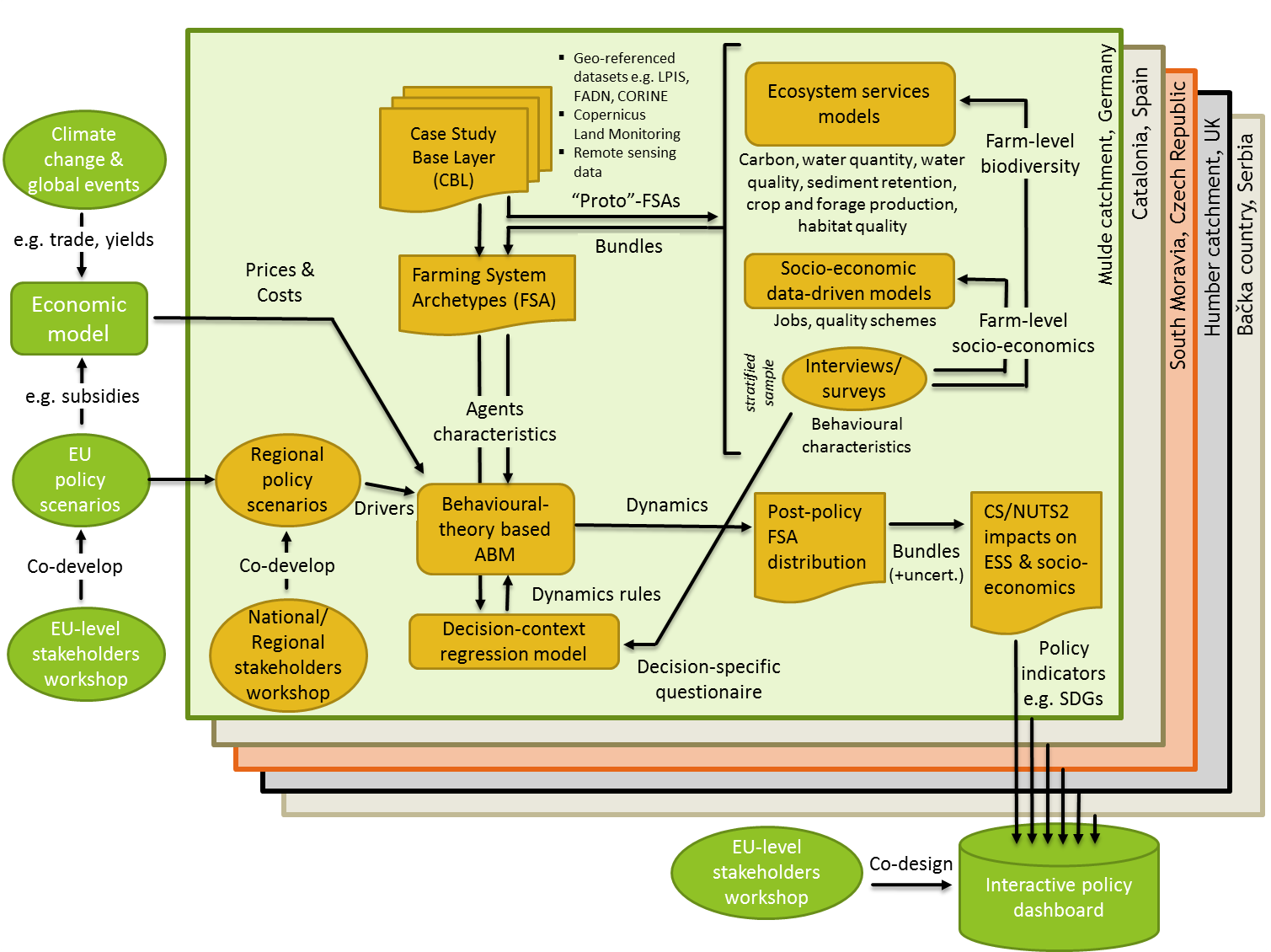
BESTMAP conceptual framework for policy impact assessment modelling, combining actions at EU scale (green), and activities within a representative set of case studies (orange; demonstrated in five areas within BESTMAP). The framework combines workshops (ovals), modelling (rounded rectangles) and interviews (ovals) producing several datasets (curved rectangles) and an online interactive dashboard (barrel shape). At the EU level, BESTMAP will co-design with policy-makers and stakeholders policy scenarios which, with existing scenarios of climate change and other global events, will input into the global economic models (here DART-BIO CGE model, but also MAGNET, CAPRI etc.). Georeferenced data layers (”Case Study Base Layers”; CBL) will be collated from existing sources including the Land Parcel Identification System (LPIS), Farm Accountancy Data Network (FADN), CORINE land-use/land cover, INSPIRE Geoportal, Copernicus Land Monitoring, national/regional datasets and existing remote sensing products. This will be used to define ‘prototype’ Farm System Archetypes (FSAs) which help stratify and design the interview campaign in each of the case studies. BESTMAP will collect demographic, behavioural characteristics and socio-economic information using semi-structured interviews (with harmonized protocols). Ecosystem services models (here the InVEST biophysically based models, but simpler e.g. capacity matrix or more complex e.g. SWAT models can in be used in the future) will estimate ESS, environmental/climatic impacts and biodiversity provided by different farming units. The ‘bundle’ of ESS, geo-statistically modelled socio-economics and behavioural characteristics will add to the CBL and define the final typology of FSAs in the case study. A generic ABM template based on the RAA behavioural theory will be locally adapted by the same interviews/surveys, and driven by the outputs (prices and costs of commodities, energy etc.) from the global economic model (DART-BIO) as well as narratives and drivers arising from a national/regional workshop interpreting the EU-level policy. The change in FSAs resulting from those scenarios via the ABM will translate to change in ESS and socio-economics defining the FSA ‘bundles’ including their uncertainty. Those impacts at the case study level will be translated into stakeholders-defined policy indicators (e.g. of the SDGs) and visualized using a standard interactive web-based data portal policy dashboard, the use of which will be the focus of training and dissemination activities.